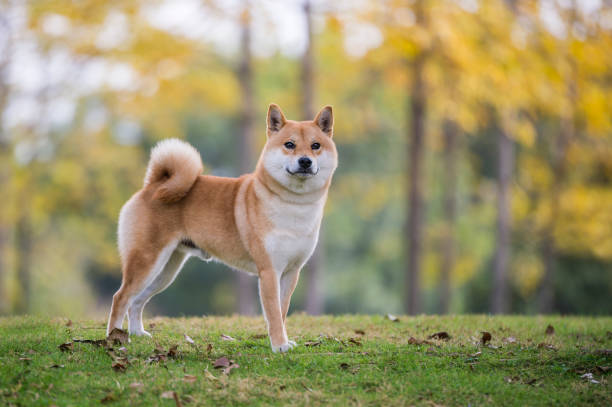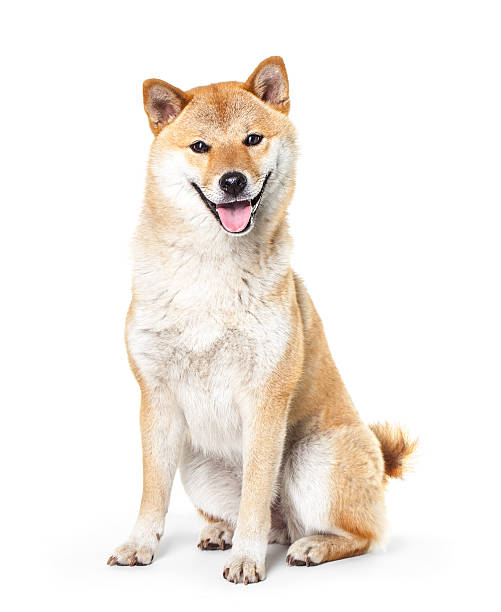The Shiba Inu Dog: History, Traits, Temperament, Care, Training, Health, and Living with This Ancient Breed
The Shiba Inu is a small-to-medium-sized dog breed from Japan, known for its fox-like appearance and spirited personality. Revered in its native country, it is one of Japan's most beloved and ancient breeds. While its historical background stretches back thousands of years, the Shiba Inu has only recently gained widespread popularity in other parts of the world, particularly in North America. This article provides a comprehensive guide to the Shiba Inu, examining its history, physical characteristics, temperament, health considerations, care requirements, training tips, and much more.

Origins and History of the Shiba Inu
The Shiba Inu's roots can be traced back over 3,000 years to ancient Japan, where it was initially bred for hunting. The word “Shiba” is thought to either refer to the breed's small size or the brushwood in which it hunted, while "Inu" simply means "dog" in Japanese. The breed was developed to hunt small game, such as birds and rabbits, in the mountainous regions of Japan. This agile dog was highly valued for its keen hunting instincts, stamina, and ability to navigate rugged terrain.
Throughout history, the Shiba Inu has undergone several periods of decline and resurgence. The breed nearly faced extinction during and after World War II due to a combination of factors, including the impact of the war, lack of breeding programs, and the introduction of foreign dog breeds. However, efforts to revive the Shiba Inu led to its recovery in the mid-20th century. Today, it is considered a national treasure of Japan and has gained considerable popularity globally.
Physical Characteristics
The Shiba Inu is a compact, muscular dog with a distinctive appearance. It stands between 13.5 and 16.5 inches (34 to 42 cm) at the shoulder, and typically weighs between 17 and 23 pounds (7.7 to 10.4 kg), making it a small-to-medium-sized breed.
-
Coat and Color: One of the most defining features of the Shiba Inu is its thick double coat. The outer coat is stiff and straight, while the undercoat is soft and dense. The coat color varies but typically includes red, black and tan, or sesame (red with black-tipped hairs). The red Shiba Inu is the most common, often resembling a small fox. The black and tan variety is equally striking, with the tan markings accentuating the dog's features.
-
Face and Expression: The Shiba Inu has a fox-like face, with pointed, triangular ears that stand erect and a curled tail that rests over its back. Its eyes are small, dark, and almond-shaped, giving the dog an alert, intelligent expression. Its overall appearance is both strong and elegant, showcasing its agility and independent nature.
-
Build: The Shiba Inu has a compact but athletic build, with well-developed muscles and a strong bone structure. Its stance is confident, and it is capable of quick, agile movements, a reflection of its hunting background.
Temperament and Personality
The Shiba Inu is known for its spirited and confident personality. While it can be affectionate and loyal to its family, it is also highly independent and sometimes aloof. Understanding its temperament is key to fostering a positive relationship with this breed.
-
Loyalty and Independence: The Shiba Inu is deeply loyal to its owners, but it is not the type of dog that constantly seeks attention or affection. It tends to be more independent than other breeds, which can sometimes give the impression of aloofness. Despite this, it is not a particularly aggressive breed and can form strong bonds with its family members.
-
Alertness and Intelligence: Shiba Inus are extremely alert and watchful, traits that made them excellent hunters in the past. They are highly intelligent dogs that can solve problems on their own, but this independent thinking can sometimes make them a bit stubborn during training.
-
Temperament with Strangers: Shibas are typically reserved around strangers. While not typically aggressive, they can be standoffish and may take time to warm up to new people. This reserved nature, combined with their strong protective instincts, makes them effective watchdogs.
-
Socialization: Early socialization is crucial for the Shiba Inu. While they are often friendly with other dogs and pets, their independent nature can sometimes lead to dominance, especially with dogs of the same sex. Socialization helps to ensure that they grow up to be well-adjusted and balanced.
-
Vocalization: The Shiba Inu is known for its wide range of vocalizations, including a unique scream-like sound known as the "Shiba scream." This sound is often heard when the dog is frightened, frustrated, or excited. While not excessively noisy, Shibas are certainly vocal when they feel the need.
Training and Care
Training a Shiba Inu can be both rewarding and challenging. Due to their intelligence and independence, they may not always be as eager to please as some other breeds, which can make training a bit more difficult. However, with patience and consistency, the Shiba Inu can be taught a variety of commands and tricks.
-
Training Techniques: Positive reinforcement works best when training a Shiba Inu. Using treats, praise, and playtime as rewards will motivate the dog to learn new behaviors. Harsh training methods or punishment-based techniques are not effective and can harm the bond between owner and dog. Since Shibas can be a bit stubborn, short, frequent training sessions tend to yield better results.
-
Exercise and Activity Level: The Shiba Inu is an active breed that requires regular exercise to stay fit and mentally stimulated. While they enjoy outdoor activities such as hiking, running, and agility courses, they are equally content with a good walk or play session in the yard. It's important to provide enough physical and mental stimulation to prevent the dog from becoming bored, which could lead to destructive behaviors.
-
Grooming: The Shiba Inu’s double coat requires regular grooming, especially during shedding seasons. While they shed year-round, their shedding becomes more pronounced during the spring and fall. Brushing the coat several times a week helps to reduce shedding and keeps the dog’s coat healthy. Bathing should be done when necessary, as Shibas tend to have a relatively clean coat and may not need frequent baths.
-
Health Considerations: Like all breeds, the Shiba Inu is prone to certain health conditions. While they are generally healthy dogs, there are a few conditions that prospective owners should be aware of:
-
Hip Dysplasia: This condition, where the hip joint does not develop properly, can lead to arthritis and pain in the dog’s hips.
-
Patellar Luxation: This occurs when the kneecap moves out of its normal position, which can cause lameness.
-
Progressive Retinal Atrophy (PRA): PRA is a hereditary condition that can lead to vision loss over time.
-
Allergies: Some Shiba Inus are prone to skin allergies, which can lead to itching and discomfort.
Regular veterinary checkups and a balanced diet can help prevent many of these issues. It's also important to keep the dog at a healthy weight to reduce the risk of joint problems.
-
Living with a Shiba Inu
The Shiba Inu is best suited for active families or individuals who have the time and energy to engage with this energetic and intelligent breed. While they do well in apartments, it’s essential to provide them with enough exercise and mental stimulation to prevent boredom.
-
Space Requirements: Shiba Inus are adaptable when it comes to living environments. They can thrive in both apartment settings and larger homes with yards, provided they get the necessary amount of exercise and stimulation. If you live in an apartment, regular walks and playtime are essential.
-
Interaction with Children and Other Pets: Shiba Inus are generally good with children, though their independent nature means they may not tolerate rough handling or constant attention. Supervision is always recommended when they interact with younger children. They can also get along with other pets, particularly if raised with them from a young age, but early socialization is key.
-
Feeding and Diet: A balanced, high-quality diet is essential for the health of a Shiba Inu. They are not particularly prone to overeating, but portion control should be practiced to avoid obesity. The Shiba Inu’s diet should be rich in protein, healthy fats, and nutrients that support joint health, given their potential for hip and joint problems.
-
Lifespan: Shiba Inus have a lifespan of 12 to 15 years, which is relatively long for a dog of their size. By providing excellent care, including proper nutrition, regular exercise, and routine vet visits, Shiba Inus can lead healthy, happy lives.
Conclusion
The Shiba Inu is a fascinating breed that offers a unique combination of beauty, intelligence, and independence. While they may require a bit of patience and understanding, especially during training, the bond formed with a Shiba Inu is one that is deeply rewarding. Whether you’re drawn to their striking appearance, spirited personality, or ancient history, the Shiba Inu makes an exceptional companion for the right owner. By providing proper care, socialization, and exercise, you can enjoy many years with this extraordinary dog.
Photo from: iStock

0 Comment to "The Shiba Inu: Japanese Origins, Notable Traits, Essential Care Practices, Effective Training, Health, and Optimal Living Environment"
Post a Comment